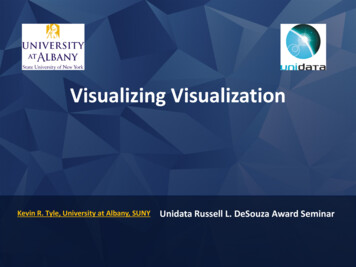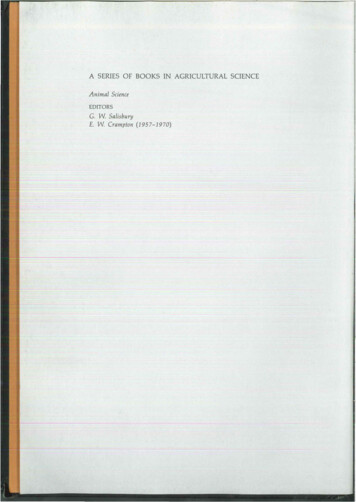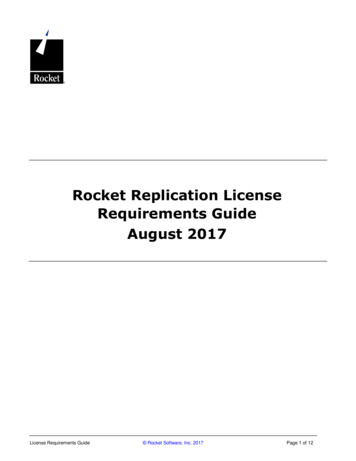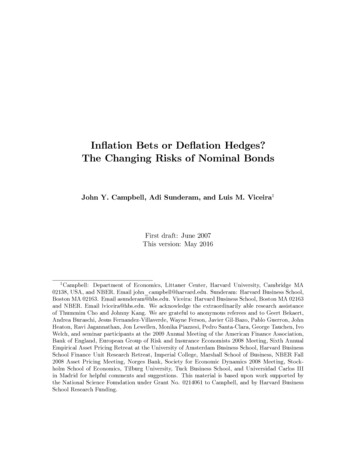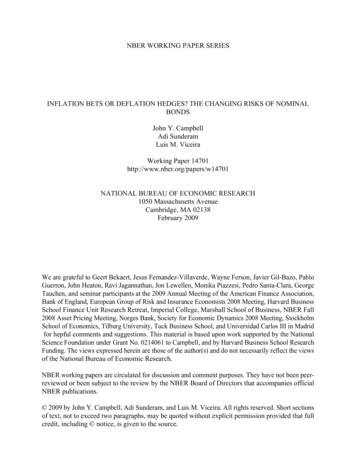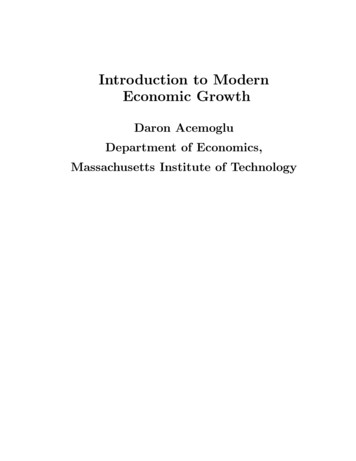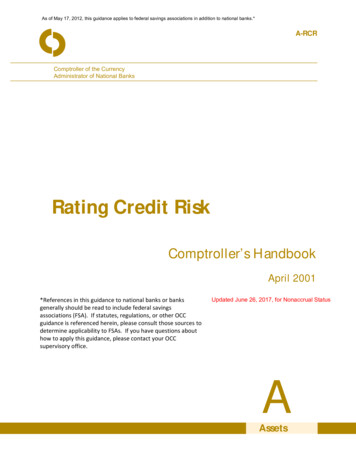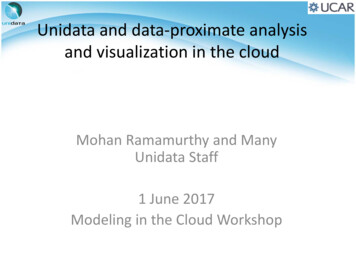
Transcription
Unidata and data-proximate analysisand visualization in the cloudMohan Ramamurthy and ManyUnidata Staff1 June 2017Modeling in the Cloud Workshop
Unidata: A program of thecommunity, by the community, andfor the communityEstablished in 1984; Primarily funded by NSF Acquire and distribute real-time meteorological data; Develop software for accessing, managing, analyzing,visualizing geoscience data; Provide training and support to users; Negotiate data & software agreements on behalf ofuniversities; Facilitate advancement of standards and conventions;
Niché and MissionNiché: Providing data services to advance Earth Systemscience research and education. Reduce “data friction”, lower the barriers foraccessing and using data, and shrink the “timeto science.”
A Snapshot of Products & ServicesData:Over 30 data streams provided inreal-timeData collection, cataloging, anddistributionBoth push and pull technologiesare usedUser Support & Training:Direct email supportCommunity mailing lists ( 60)Annual Training Workshops, TriennialUsers Workshops, and RegionalWorkshops as needed.Software:Data Distribution: LDMRemote Data Access: THREDDS DataServer, ADDE, and RAMADDAData Management: netCDF, UDUNITS,and RosettaAnalysis and Visualization: GEMPAK,McIDAS, IDV, and AWIPS IIGIS support via TDS (WCS, WMS) andKML and ShapefilesCommunity:Community Engagement; EquipmentAwards to universities; Seminars;Advocacy;
Real-time Data DMSourceLDMLDMLDMInternetLDMLDMLDMAbout 30 different streams of real-time weather data from diversesources are provided to 1250 computers worldwide.Unidata’s outbound traffic out of UCAR network is about 31Terabytes/day. In fact, we move more data via Internet 2 than any otheradvanced application.
Remote Data Access Complements the IDD/LDM push data delivery system Available via THREDDS Data Server, RAMADDA, and ADDEdata servers that support several protocols and APIs:– OPeNDAP– ADDE– HTTP– FTP– WCS and WMSThe Unidata Program Center operates a data server, thatprovides the above services. Nearly one terabyte of dataare downloaded each day from our servers.
What is our motivation? Data volumes are getting to be too large to bring all of the data toyour local environment. Need to keep data close to the point of origin or dissemination andprovide the requisite tools and services and create a “playground”and workbench in the cloud. Bottom line: We need to move from “bringing the data to thescientist” to “bringing the science to the data”. We would like to exploit the elasticity and easy virtualizationaspects of the cloud.For these and other reasons, Unidata made a decision totransition data services to the cloud about 4 years ago.
Goals for our Cloud work Along with providing data access, develop andprovide data-proximate processing, analysis andvisualization services that are portable. Provide portable, cloud-compatible software (i.e.,Docker containers) that users can run on their owncloud, private or public.
Unidata Cloud Projects
Unidata Cloud Partners
AWIPS Data Servers in the CloudUnidata is runningAWIPS-EDEX dataserver in theMicrosoft Azurecloud and exploringuse in the JetstreamCloud.
AWIPS Data Servers in the CloudUnidata is runningAWIPS-EDEX dataserver in theMicrosoft Azurecloud and exploringuse in the JetstreamCloud.44 universities are using Unidata’s Azurehosted EDEX.
Easing the Community Burden when DeployingSoftware in the Cloud Deploying services to the cloud/maintainingservices in the cloud can be complicated andtime consuming.
Easing the Community Burden by DeployingPortable Software in the Cloud Solution: Containerization, e.g. Docker
Virtual Machines vs. ContainersDocker Benefits SmallFootprint Rapid andLightweightDeployment Portability Reuse
Containerizing Applications We have created Docker container images for several Unidataapplications, including the Integrated Data Viewer (IDV),THREDDS Data Server, Local Data Manager (LDM), and manyPython tools. We have been deploying these applications in our own cloudinstances and also making them available as downloadablesoftware to our users. We have released a technology stack (dubbed CloudStream) tomake it easy to deploy desktop software (as opposed to serversoftware) in the cloud.
CloudIDVThe CloudIDVDocker imagecontains thestandard IDV aswell as all of thetechnologyrequired to run it inthe cloud, accessedvia browser.
CloudIDV
Remote Data Analysis & Visualization In addition to enabling cloud-hosted data access, Unidata isleveraging cloud technologies to enable data proximate analysisand visualization capabilities. Specifically, Unidata is integrating the capabilities of THREDDS DataServer and AWIPS II EDEX Server, Jupyter Notebook platform,Siphon Python data access tool, and MetPy/CartoPy/Matplotlib,IDV and GEMPAK analysis and visualization applications.
TDS Siphon Python PlottingUsing Siphon to query the NetCDF Subset Service and plotting it to a map
NOAA Big Data Project and UnidataCloud ActivitiesUnidata is collaborating with Amazon Web services andOpen Commons Consortium CRADA Partners.
Collaborative Activities with AWS Streaming real-time NEXRAD radar data to AWS/S3 operationallyusing the Unidata LDM software. We are continuing ourpartnership and now moving GOES-16 data. We will next startmoving NCEP model output (including the National Water ModelOutput) to AWS. Running Docker-containerized THREDDS Data Server to serveradar data from AWS/S3. Providing JupyterHub multi-user Python environment, includingplotting tools. Providing individual Docker containers. We are continuing our partnership with AWS on the NOAA Big DataProject and on other Unidata efforts, including the provision ofGOES-16 dataFor the first time, users have seamless access to bothhistorical and real-time WSR-88D Radar Data from the samelocation and interface.
Cloud Partnerships Unidata received a sizeableallocation on the NSF XSEDEJetstream cloud. We are currently deploying anarray of Unidata services in thatenvironment.
Thank YouUnidata is one of the UniversityCorporation for Atmospheric Research(UCAR)'s Community Programs (UCP),and is funded primarily by the NationalScience Foundation (Grant NSF-1344155).
Data Management: netCDF, UDUNITS, and Rosetta Analysis and Visualization: GEMPAK, . transition data services to the cloud about 4 years ago. Goals for our Cloud work . historical and real-time WSR-88D Radar Data from the same location and interface. Cloud Partnerships Unidata received a sizeable


